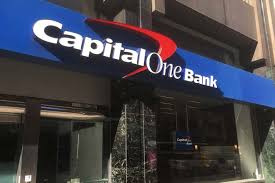In today’s competitive business landscape, many companies are exploring various financial strategies to enhance their cash flow and manage their operations effectively. One such strategy gaining traction is in-house financing. This approach allows businesses to offer their products or services through financing directly, providing customers with flexible payment plans. Companies not only make their offerings more accessible, but they also retain greater control over their financing solutions. Embracing in-house financing can present several advantages, such as improved customer relationships, increased sales, and the ability to tailor funding to meet specific needs. Understanding the benefits of in-house financing is crucial for any business looking to thrive in a rapidly changing market.
Understanding In-House Financing: A Comprehensive Overview
In-house financing is a term that often raises eyebrows among consumers and businesses alike. What exactly does it mean? In simple terms, it refers to a financial arrangement where a company provides credit or financing options directly to customers, skipping traditional lenders. This setup can seem confusing at first, especially when navigating through the various financing options available on the market. However, grasping the concept can unveil numerous opportunities for both buyers and sellers.
What are in-house financing options?
In-house financing options are tailored solutions that allow customers to make purchases on credit without involving external financial institutions. For instance, a car dealership might offer financing directly to consumers, enabling them to drive home with their new vehicle immediately. This bypasses the sometimes lengthy approval processes associated with banks or credit unions. Yet, it can lead to misconceptions about the costs and terms involved.
- Flexibility in Terms: Companies can set their terms, which may better suit individual circumstances than standard banks.
- Immediate Approval: Many customers value the swift approval process, frequently obtaining financing immediately.
- Custom Rates: In-house solutions can offer competitive rates that defy traditional lending criteria.
The benefits of in-house financing
The allure of in-house financing lies in its numerous advantages. However, it’s essential to look beyond the obvious perks to fully understand the implications.
- Streamlined Process: Dealing with a single entity is simpler, making the purchasing process more efficient.
- Enhanced Customer Relationships: Companies often cultivate better relationships with customers, fostering loyalty.
- Potential for Better Deals: Customers may find exclusive deals that external financing sources cannot provide.
Challenges and Considerations
Despite its many benefits, in-house financing also comes with challenges. For instance, some customers may face higher interest rates than traditional loans. This could be a shock if one doesn’t read the fine print. Moreover, not all businesses offer the same level of transparency, leading to potential misunderstandings regarding repayment terms.
Furthermore, it’s crucial to differentiate between in-house financing solutions. Not every arrangement is created equal. Thus, it’s wise to conduct thorough research and consider all the financing options available.
Conclusion
In-house financing presents a compelling alternative to standard lending practices. While the appeal lies in its convenience and potential benefits, consumers must navigate carefully through its complexities. By understanding both the advantages and pitfalls, you can make informed decisions that align with your financial goals. After all, knowledge is power, especially in the world of finance.
Advantages of in-house financing over traditional loan options
When considering financial strategies for your business, the choice between in-house financing and traditional loan options can be quite perplexing. Many entrepreneurs have long considered traditional loans from banks or lending institutions as their preferred solution. However, if we take a closer look, the unique benefits of in-house financing start to stand out.
Terms and Conditions are flexible.
One major advantage of in-house financing is the flexibility it offers. Unlike traditional loans, where terms are often rigid and unyielding, in-house financing typically allows for more personalized arrangements. You can negotiate the duration, monthly payments, and even interest rates based on your current financial situation. This adaptability can make a significant difference, especially for businesses experiencing fluctuating cash flow or seasonal income.
Quicker Approval Process
In-house financing usually means bypassing the lengthy approval times associated with traditional loans. When you rely on a bank, you may need to provide extensive documentation, and the approval can take weeks or even months. With in-house financing, the process often takes only a few days or even hours. You get the funds you need much faster, allowing you to swiftly seize opportunities or manage unexpected expenses.
Building stronger relationships
Another beneficial aspect of in-house financing is the relationship it cultivates between the buyer and the business. Internal handling of the financing may strengthen customers’ connection to the company. This personal touch can foster loyalty. Customers are more likely to return for future purchases if they know they can come to the business for payment support.
Avoiding hidden fees and complicated terms
Traditional loans often come with hidden fees, complicated interest structures, and terms that can be difficult to decipher. With in-house financing, what you see is generally what you get. Unlike the fine print and legal jargon often associated with banks, in-house financing options are typically straightforward and transparent. This clarity can help you plan better without worrying about unexpected costs.
Improved cash flow management
With in-house financing, businesses can tailor payment schedules to align more closely with cash flow. Traditional loans may require fixed payments that do not consider your income patterns. However, with in-house financing, you can establish a plan that matches your operational cycle. This ability to synchronize payments can alleviate financial stress and enable better cash flow management.
| Feature | In-House Financing | Traditional Loans |
|---|---|---|
| Approval Speed | Fast and streamlined | Slow and bureaucratic |
| Flexibility | Highly customizable | Fixed terms |
| Hidden Fees | Minimal | Common |
In conclusion, while traditional loans can fulfill certain needs, it’s clear that in-house financing comes with a host of advantages. It addresses flexibility, approval speed, and financial clarity all at once. As you weigh your options, consider how in-house financing might serve as a more tailored, customer-centric solution for your business needs. After all, every financial decision shapes the future of your enterprise.
How In-House Financing Can Boost Customer Loyalty and Satisfaction
In today’s rapidly changing market, businesses strive to connect with their customers on a deeper level. One effective method to achieve this is through in-house financing. This approach not only enhances the purchasing experience but can also significantly improve customer loyalty and satisfaction. By considering how it differs from traditional financing, we can appreciate its impact on customer relationships.
The Appeal of In-House Financing
When customers encounter in-house financing, they often feel a more personal touch. Unlike traditional financing methods, which can be impersonal and rigid—often relying on third-party institutions—this model integrates finance directly into the business. Customers appreciate dealing with a single entity, the company they trust, rather than navigating the complexities of outside lenders. This streamlined process is especially appealing in a world where time is often of the essence.
Building trust through direct interaction
In-house financing fosters a sense of trust. When customers finance their purchases directly through the company, they feel a stronger connection. This bond can lead to an increase in customer loyalty. The very nature of this financing means that the business is not just selling a product; it’s also investing in the customer’s financial future. This commitment can generate a feeling of security, making customers more likely to return for future purchases.
A Tailored Experience for Unique Needs
Another striking feature of in-house financing is its ability to offer tailored solutions. Unlike traditional financing options, which often apply broad criteria to assess eligibility, in-house financing allows businesses to consider individual customer circumstances. For instance, a business might be willing to offer flexible repayment plans based on a customer’s past purchasing history or payment capabilities. This personalized approach can significantly enhance customer satisfaction.
Increased satisfaction has a ripple effect.
When customers receive personalized support through in-house financing, they tend to be more satisfied overall. This satisfaction doesn’t just lead to repeat business; it can inspire customers to become loyal advocates for the brand. They might share their positive experiences with friends and family, which can attract new customers. In this sense, happy customers not only return but also help the business grow through word of mouth.
Challenges and Considerations
However, it’s crucial to recognize that in-house financing isn’t a one-size-fits-all solution. Some businesses may encounter challenges or lack the necessary infrastructure to support such programs effectively. Moreover, companies need to ensure that they maintain ethical standards when offering financing options to customers. Transparency in terms and conditions can prevent misunderstandings and reinforce customer trust.
In conclusion, in-house financing presents a promising avenue for enhancing satisfaction and loyalty among customers. By focusing on personalized experiences and building trust, businesses can cultivate strong, long-term relationships with their clientele. While traditional financing methods have their merits, the personal touch offered by in-house options often makes all the difference in the eyes of the customer. As we navigate the complexities of a modern marketplace, businesses must consider how they can adapt and innovate to meet the needs of their customers more effectively.
The role of in-house financing in improving cash flow management is significant.
In today’s fast-paced business environment, effective cash flow management is a critical component of a company’s financial health. In-house financing is one of the most overlooked strategies for businesses. This approach can have a significant impact on a company’s ability to manage its incoming and outgoing cash efficiently. But what exactly does in-house financing entail, and how does it facilitate better cash flow management?
Understanding in-house financing
In-house financing refers to the practice where a company uses its resources to fund operations rather than relying on external creditors or investors. This can include financing for projects, inventory purchases, and even customer loans. The beauty of in-house financing lies in the flexibility it offers.
However, it’s important to strike a balance. Relying solely on internal funds can pose risks. If a company encounters unexpected expenses or a downturn, having all eggs in one basket can lead to financial strain. Thus, it’s essential to evaluate the specific needs and conditions of the business regularly.
The benefits of in-house financing
- Improved Cash Flow: By utilizing its funds, a business can avoid the long wait times often associated with third-party financing. This leads to quicker decisions and enhances the overall cash flow.
- Reduced Costs: Using in-house financing can eliminate the fees and interest charges typically associated with loans. This not only lowers expenses but also guarantees the avoidance of unnecessary spending.
- Greater Control: When companies finance internally, they maintain better control over their finances. They can establish their terms and conditions, which leads to a more tailored financial strategy.
- Flexibility: In-house financing allows for more adaptable spending. Companies can pivot easily to meet emerging needs without undergoing lengthy approval processes.
Cautions to Consider
While the benefits are clear, potential drawbacks exist. It’s crucial to remain aware of the challenges associated with this method. For instance, a lack of funding could impede growth opportunities. Companies may miss out on strategic investments or necessary expansions if they do not have sufficient cash reserves. Additionally, overcommitting to in-house funding can restrict a company’s ability to diversify its financial sources.
Conclusion
In-house financing can be a powerful tool for improving cash flow management. However, it requires careful consideration and balance. Companies must weigh the benefits against the potential drawbacks, ensuring that they maintain enough flexibility to adapt to changing circumstances. Ultimately, finding the right approach can lead to a more stable financial future.
| Benefit | Description |
|---|---|
| Improved cash flow | Access to funds for operations is faster. |
| Reduced Costs | Lower overall financial expenditures. |
| Greater Control | Customizable financial strategies. |
In conclusion, businesses must be proactive and strategic when considering in-house financing as a means to enhance cash flow management. Regular assessments and a willingness to adapt can turn this approach into a significant advantage.
Here are some key strategies for implementing in-house financing in your business.
When considering ways to enhance your business’s financial accessibility, in-house financing emerges as a prominent strategy. This approach can not only streamline purchasing processes but also foster stronger relationships with customers. However, it requires careful planning and execution to be effective.
Understanding your customers’ needs
First and foremost, it’s crucial to understand your customers’ needs. Many businesses make the mistake of assuming they know what their clients want. However, genuine insight often requires digging deeper. Conducting surveys or focus groups can provide valuable feedback. This information can aid you in tailoring your in-house financing program to address specific customer preferences. There’s no one-size-fits-all solution, and researching can be beneficial in the long run.
Developing clear financing options
Once you have a better understanding of your audience, the next step is to develop clear financing options. You should present various plans that cater to different financial situations. For instance, offering a mix of short-term and long-term financing can help accommodate a broader range of customers. You might wonder how to set these terms. Well, that often depends on your margins and payment cycles. It’s essential to strike a balance between affordability for your customers and profitability for your business.
Train your staff effectively.
Staff training is another crucial aspect. Employees who are well-versed in your financing options can make a world of difference. They act as a bridge between your business and its customers. A knowledgeable staff member can explain the benefits of in-house financing and assist customers in choosing the best plan. It’s not just about selling a product; it’s about creating an experience. However, training should extend beyond the basics. Encouraging employees to engage meaningfully with customers can foster loyalty.
Monitoring and Adapting Your Programs
Finally, don’t forget to monitor and adapt your financing programs. The most effective strategies evolve. You should regularly review customer feedback and sales data to determine what’s working and what’s not. If certain financing options aren’t popular, don’t hesitate to tweak them. Additionally, staying updated on industry trends can inspire new ideas. You might find that a change in the market can open up exciting opportunities for your existing frameworks.
In conclusion, implementing in-house financing isn’t simply about making their services accessible. It’s about creating a more inclusive purchasing pathway that resonates with your customers. By understanding their needs, developing clear options, training your staff, and remaining adaptable, your business can thrive in this competitive landscape. It may seem overwhelming at first, but with a methodical approach, you can transform these challenges into opportunities.
html
Assessing the Risks and Benefits of In-House Financing: What You Need to Know
The decision to utilize in-house financing can be both intriguing and daunting. This approach offers unique advantages, yet it comes with its share of risks. Understanding these elements is crucial for businesses looking to enhance their financial strategies. Let’s delve into the potential risks and benefits associated with this financing option.
What is in-house financing?
In-house financing refers to the practice of a company providing loans directly to its customers. Instead of relying on external financial institutions, businesses take charge of the financing process. This can create a more seamless customer experience, but it can also lead to complications.
The benefits of in-house financing
One of its most notable benefits is the flexibility it offers. Companies can tailor their plans to meet customer needs without adhering to strict external regulations. This move can foster stronger customer relationships and enhance loyalty. Additionally, businesses can enjoy increased control over the terms of payment, which can lead to improved cash flow. For example, a dealership can offer loans at flexible interest rates, making big-ticket purchases more accessible to customers.
Potential risks involved
However, the advantages don’t come without risks. The potential for default is one major concern. If a customer struggles to make payments, the business bears the responsibility of handling collections, which can drain resources. Not only does this create a burden on the operational side, but it can also impact overall profitability.
Moreover, businesses engaging in in-house financing need to ensure that they have a robust underwriting process in place. A lack of proper evaluation mechanisms can lead to poor loan decisions, resulting in negative financial implications.
Balancing the equation
When weighing the pros and cons, it’s essential to conduct a thorough risk analysis. Every company and industry may not benefit from in-house financing. For some businesses, the allure of simplicity might mask underlying complexities.
“The key isn’t to prioritize what’s on your schedule, but to schedule your priorities.” Stephen Covey
It may also be helpful to consider the following table that summarizes the major risks and benefits associated with in-house financing:
| Benefits | Risks |
|---|---|
| Increased customer loyalty | Risk of defaults |
| More control over the financing terms | Resource strain on collections |
| Flexible payment options | Strong underwriting is required. |
Conclusion
In summary, assessing the risks and benefits of in-house financing requires careful consideration. It’s essential to recognize that while it can provide a competitive edge, it also demands a solid understanding of finance. Businesses should not overlook the importance of structure and strategy when venturing into this financing method. Ultimately, being informed and prepared can make a significant difference in navigating the complexities of in-house financing.
Case Studies: Successful Businesses Utilizing In-House Financing
In recent years, more businesses have begun to explore the concept of in-house financing as a way to bolster their growth and improve customer relations. This approach, while not universally applicable, offers several compelling advantages. From automotive companies to retail giants, a range of industries have successfully integrated this model into their business practices. Let’s dive into some notable case studies to see how these companies have thrived by leveraging their financing options.
1. Automotive Industry
Take, for instance, a well-known automotive manufacturer that implemented a comprehensive in-house financing scheme. They not only increased their sales, but they also cultivated a loyal customer base. This company recognized the potential for customer retention through tailored financing solutions.
- Flexible Payment Plans: They introduced flexible payment options, making it easier for customers to manage their budgets.
- Attractive Incentives: By offering incentives such as lower interest rates, customers feel valued and more inclined to make a purchase.
- Streamlined Processes: By streamlining the application process, customers can now drive off in their new vehicles without the typical hassles of traditional financing.
2. Retail Sector
In the retail sector, an upscale furniture store provides another intriguing example. Rather than relying solely on third-party lenders, they opted for an in-house financing program that focused on offering credit directly to customers. This decision had far-reaching effects.
- Enhanced Customer Experience: Customers appreciated the personalized service, which fostered a sense of trust and connection.
- Increased Average Sale Value: By allowing customers to finance larger purchases, the store saw a significant rise in the average transaction value.
- Improved Cash Flow: The business was able to retain more profits without sharing them with external finance companies.
3. Home Improvement Services
Lastly, consider a home improvement company that has adopted in-house financing for its services. This company targeted homeowners looking to enhance their living spaces without significant upfront costs. The method proved to be a game-changer.
- Targeting a Wider Audience: By offering financing, they attracted a broader demographic, including customers who might have hesitated due to immediate costs.
- Building Long-Term Relationships: They created lasting relationships with clients, which often resulted in referrals and repeat business.
- Increased Job Completion Rates: With financing options available, more clients are committed to projects, leading to a boost in revenue.
These case studies illustrate that in-house financing can significantly benefit companies willing to venture down this path. However, it’s essential to remember that implementing such a program requires careful planning and a solid understanding of its financial implications. Missteps can lead to more problems than solutions, so businesses should tread cautiously as they explore this promising avenue.
In summary, the success stories of these businesses highlight the profound influence of in-house financing not only on a company’s bottom line but also on customer satisfaction and loyalty. As more businesses look to innovate and adapt to changing markets, in-house financing presents an exciting opportunity worth considering.
Regulatory Considerations for In-House Financing Programs
When companies decide to implement in-house financing programs, they must navigate a complex web of regulatory considerations. These programs often provide flexibility and accessibility to customers seeking financing options, but they also come with responsibilities that can be daunting. Understanding these complexities is critical for both the program’s success and the company’s protection.
Understanding regulatory frameworks
First and foremost, organizations must understand the regulatory frameworks governing such financing initiatives. Both federal and state laws and regulations can influence the structure of in-house financing programs. For instance, the Truth in Lending Act (TILA) guarantees complete transparency to customers regarding the terms of their financing agreements. This means that organizations must disclose interest rates, payment schedules, and any other pertinent fees upfront, fostering transparency.
Moreover, adherence to the Fair Credit Reporting Act (FCRA) is also crucial. This regulation delineates the handling of customer credit information, particularly crucial in determining eligibility for financing. Companies need to securely manage sensitive data to avoid potential breaches and maintain customer trust.
Compliance Challenges
However, complying with these regulations is not without challenges. Many companies encounter difficulties in understanding nuanced requirements. For instance, organizations might be unsure about how to implement changes as laws evolve. A lack of clarity could lead to misinterpretations, risking potential fines or, worse, legal action. To mitigate this risk, staying informed through continuous training and updates on regulatory changes is essential.
Additionally, some businesses might underestimate the importance of maintaining accurate records. Failing to document financing agreements properly can result in severe repercussions. This may include difficulties defending against customer complaints or legal disputes down the line. Companies ought to establish robust record-keeping practices to ensure compliance and protect themselves from unanticipated challenges.
The importance of consumer education
An often-overlooked aspect of regulatory considerations is the importance of consumer education is often overlooked in regulatory considerations. Organizations should not only focus on compliance but also on empowering customers with knowledge. By providing clear and concise information about financing options, companies can enhance customer understanding. Educated consumers are more likely to engage positively with financing programs, which can help foster long-term relationships based on trust.
This is where companies might find additional value. If customers understand their financing agreements well, they are less likely to default on payments or feel confused about their obligations. Ultimately, a well-informed customer base can lead to healthier financial outcomes for the company.
Conclusion
In summary, while the regulatory considerations for in-house financing programs can seem overwhelming, they are critical to the success of such initiatives. Companies that take the time to understand and implement compliance measures will likely enjoy the fruits of a well-structured program. To foster lasting relationships, however, they must be in tune with both legal frameworks and consumer needs. In this complex landscape, diligence, and transparency can be a company’s best allies.
| Key Regulation | Impact |
|---|---|
| Truth in Lending Act (TILA) | Requires disclosure of financial terms. |
| Fair Credit Reporting Act (FCRA) | It regulates the use of customer credit data. |
| Fair Debt Collection Practices Act (FDCPA) | Protects consumers from abusive collections. |
In navigating these challenges, it is prudent for companies to seek guidance from legal experts and compliance professionals. This proactive approach can lead to not only smoother operations but also a stronger reputation in the market.
Future In-House Financing Trends: What to Expect in the Coming Years
In recent years, the landscape of in-house financing has undergone significant transformation. As businesses continue to adapt to technological advancements and shift consumer behaviors, several trends are emerging that will shape the future of in-house financing. These trends not only reflect a changing economic environment but also highlight a fundamental shift in how organizations approach financing strategies.
The rise of digital solutions
One of the most notable trends is the increasing reliance on digital solutions. Innovative digital platforms are gradually complementing, and in some cases replacing, traditional financing methods. The growing demand for efficiency and speed in financial transactions fuels this transition. Companies are adopting software that automates various financing processes, which helps reduce human error and saves valuable time. However, amidst all this automation, one has to wonder: does the personal touch vanish in the pursuit of efficiency? This debate can be a point of contention among finance professionals.
Consumer-Centric Financing Models
Another trend to watch is the shift towards more consumer-centric financing models. Businesses are beginning to understand that today’s customers value customization and flexibility in their financing options. This means that companies might offer tailored packages that meet individual customer needs. However, this approach raises questions about how far a company can go in personalizing financing options without facing operational challenges. Balancing personalization with standardization is a tightrope walk that many organizations haven’t yet mastered.
Sustainability Considerations
Furthermore, sustainability is moving to the forefront of in-house financing discussions. Many companies are now factoring environmental responsibility into their financial strategies. This could lead to the emergence of financing products specifically aimed at funding sustainable initiatives. But what does this mean for traditional business models? Some argue that it could create new opportunities, while others caution that it may complicate existing financing frameworks. The implications are vast and complex.
The Role of Data Analytics
Data analytics will also play an increasingly crucial role in shaping the future of in-house financing. Businesses are collecting and analyzing vast amounts of data to inform their financing decisions. This data-driven approach can provide insights into customer behavior and market trends, allowing companies to make more informed choices. Yet, relying heavily on data raises important questions about privacy and security. How can organizations ensure that they use this data ethically while still benefiting from it?
In conclusion, various factors such as digital transformation, consumer preferences, sustainability, and the effective use of data analytics will influence the future of in-house financing. Each of these aspects presents both opportunities and challenges. As organizations navigate this changing terrain, it will be essential to maintain a balance between innovation and the human element. After all, in a world that increasingly values technology, human connection remains irreplaceable.

Conclusion
In conclusion, in-house financing presents a unique opportunity for businesses to thrive. By keeping the funding process within your organization, you gain more control over the terms and repayment options. This flexibility can make a significant difference in managing cash flow and building stronger relationships with customers. Additionally, in-house financing fosters loyalty, as clients appreciate the convenience it offers. While it may require some initial investment and effort, the long-term benefits often outweigh these challenges. Ultimately, I believe that embracing in-house financing can pave the way for sustainable growth and a brighter future for your business. Don’t hesitate to consider this approach and see how it can transform your operations.
Frequently Asked Questions
What is in-house financing?
In-house financing refers to a lending process where a company provides its financing options directly to customers rather than relying on traditional financial institutions like banks.
What are the benefits of in-house financing?
The benefits of in-house financing include simplified approval processes, flexibility in payment terms, and the ability to cater financing solutions specifically to the needs of the customer.
Who can qualify for in-house financing?
Qualification criteria for in-house financing can vary by company, but typically, it may depend on the customer’s credit score, income level, and the amount financed.
Is in-house financing right for me?
In-house financing can be a beneficial option for those with less-than-perfect credit or those who prefer a more personalized financing experience, but it’s important to compare terms with other financing options.
How does the application process work for in-house financing?
The application process generally involves filling out a form with your financial information, and the company will evaluate your creditworthiness based on this information.
What kinds of purchases are eligible for in-house financing?
Depending on the company offering financing, you can often use in-house financing for a variety of purchases, including vehicles, furniture, appliances, and other large-ticket items.
Are there any hidden fees with in-house financing?
It’s essential to read the terms and conditions carefully, as some companies may charge processing fees or have higher interest rates compared to traditional financing options.
Can I pay off my in-house financing early?
Most in-house financing agreements will allow for early payoff, but it’s advisable to check for any potential prepayment penalties in the terms.
How do interest rates work for in-house financing?
Interest rates for in-house financing can vary widely based on the lender’s policies and the customer’s credit profile; it’s important to compare these rates to external financing options.
What happens if I miss a payment on my in-house financed item?
Missing a payment can result in late fees and may affect your credit score. It’s important to communicate with the financing company to address any payment issues as soon as possible.


















